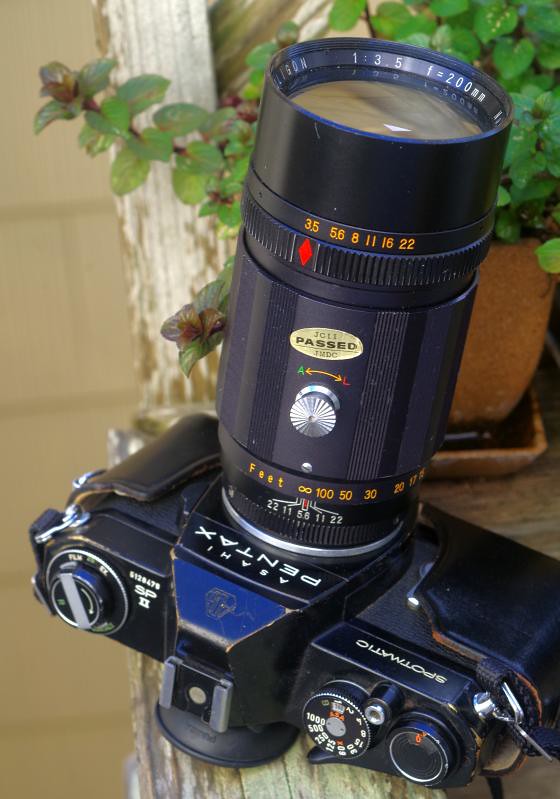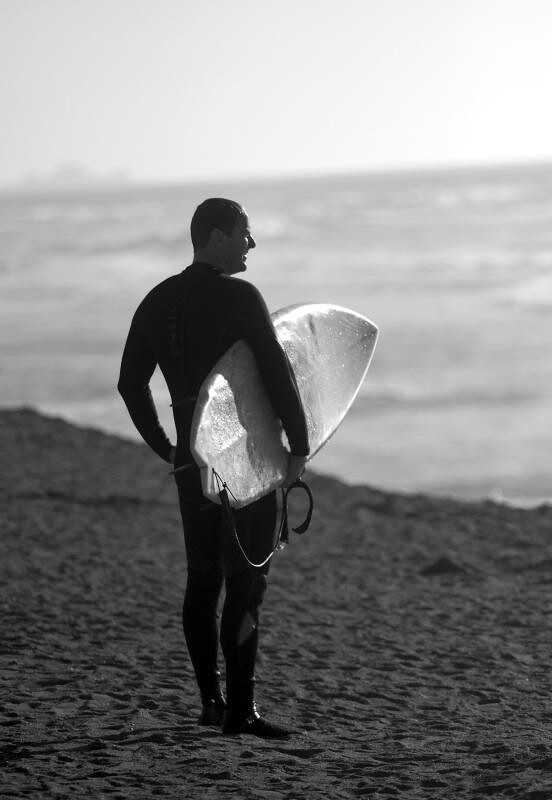luisalegria


Joined: 07 Mar 2008
Posts: 6602
Location: San Francisco, USA
Expire: 2018-01-18
|
 Posted: Thu Jan 05, 2017 7:36 pm Post subject: Aetna Auto Coligon 200/3.5 T-mount - yes, an auto T-mount Posted: Thu Jan 05, 2017 7:36 pm Post subject: Aetna Auto Coligon 200/3.5 T-mount - yes, an auto T-mount |
 |
|
luisalegria wrote:
A curiosity, found as usual on ebay -

Aetna Auto Coligon 200/3.5
This is I believe an Itoh made lens (the "house brand" was Higon) from the late 1960's. Its a preset T-mount lens, but not at all an ordinary one.
Aetna Optix of Island Park NY (on Long Island) was one of the larger US camera accessories importers/wholesalers of the 1950's-80's. Its common brands included Coligon and Rokunar. A great number of early Tamron (Taisei Kogaku) products came in to the US via Aetna, including most of the T-mount series, It was the lead importer of Sun and was for a time the official US dealer for Exakta cameras.
I have another of these lenses in the same series, another Aetna Coligon-branded and likely Itoh-made 135/2.8, that I tested some time ago. Unfortunately it is buried in a box somewhere so I was unable to do a side-by-side shot.
The writeup is here -
http://forum.mflenses.com/aetna-auto-coligon-135-2-8-t-mount-wait-how-can-that-be-t16300,highlight,%2Baetna.html
This is very much like its 135mm little brother, but this one works perfectly and doesn't stick.
In summary, this is an attempt to have a preset lens using a simple T-mount achieve a similar effect to the auto-stopdown function - focus wide open and stop down immediately to the taking aperture when the shutter is tripped. This had become standard on SLR's in the late 1950's-early 1960's. Auto mounts were a problem for third party lensmakers because interfacing with the various camera mounting systems and their different mechanical linkages, the pins and arms and levers that communicate with the lens, becomes much more expensive and complicated than with the simple T-mount system, which has no mechanisms to worry about. Its difficult to manufacture a lens in a dozen different mounts. Thats one reason why T-mount lenses are still made today.
There were at least a dozen popular SLR auto lensmounts by the mid-1960's - Nikon, Canon, Exakta, M42, Minolta, etc. Many makers at the time got into making sometimes very complex interchangable auto mounts, Tamron for instance with its Adaptamatic and Adaptall/Adaptall-2 systems, Tokina with its T4 and TX, a consortium of Sigma/Sun/Sankor(Nissin) with YS, etc. Komura, a very eccentric outfit, came up with three or four different mounting systems of its own.
This lens gets around that, partly, by an attempt at an ergonomic solution. The button on the focus ring, if pressed, stops down the lens to the selected aperture; let go of it and the aperture springs back to open. It can also be locked, and then lens is pure manual aperture.
The button is on the focus ring because the focusing hand closes the aperture prior to pressing the shutter. Its better and faster than taking your hand off the focus ring to close down the aperture with a separate ring as usual on other preset lenses. This does work, with some compromises, and of course one has to remember to press the button!
The worst problem with this is that the focus rotation is very short compared to more normal lenses, as that button can't be permitted to wander too far around the focus grip or the user would find it awkward. It would also, probably, complicate the mechanism even more than it already is.
Needless to say, this particular solution was not copied by anyone else, though Tamron and Sun tried different shutter-cable mechanisms with pistol grips, etc., to do the same thing on a few of their lenses.
As a lens I find this mediocre, its rather soft wide open but quite reasonable stopped down to f/5.6. Its otherwise a conventional third-party preset 200mm of its time, especially the rather long 11-foot/3.5 meter minimum focus. The short throw on the helical makes accurate focus a bit more difficult than it should be.
This is a rather rare lens, a collectors item more than a user.
Samples below - most at f/3.5









The bird -

crop -

_________________
I like Pentax DSLR's, Exaktas, M42 bodies of all kinds, strange and cheap Japanese lenses, and am dabbling in medium format/Speed Graphic work. |
|
Lloydy


Joined: 02 Sep 2009
Posts: 7796
Location: Ironbridge. UK.
Expire: 2022-01-01
|
 Posted: Thu Jan 05, 2017 8:31 pm Post subject: Posted: Thu Jan 05, 2017 8:31 pm Post subject: |
 |
|
Lloydy wrote:
Lovely pictures Luis, you always seem to get the best out of these old lenses. And it doesn't matter if they are sharp or not, they are lenses of their time, and time might not have been kind to them either. It's easy to look for sharpness, but in doing so we compare the old lenses to the new ones, which isn't fair.
An interesting write up on an unusual lens as well.
_________________
LENSES & CAMERAS FOR SALE.....
I have loads of stuff that I have to get rid of, if you see me commenting about something I have got and you want one, ask me.
My Flickr https://www.flickr.com/photos/mudplugga/
My ipernity -
http://www.ipernity.com/home/294337 |
|
